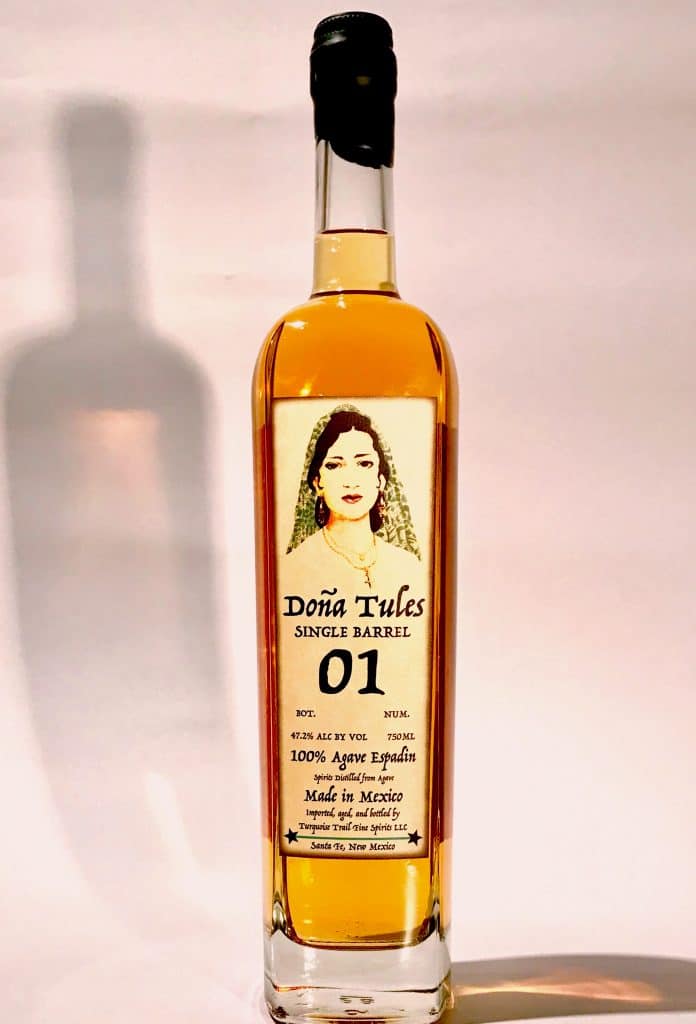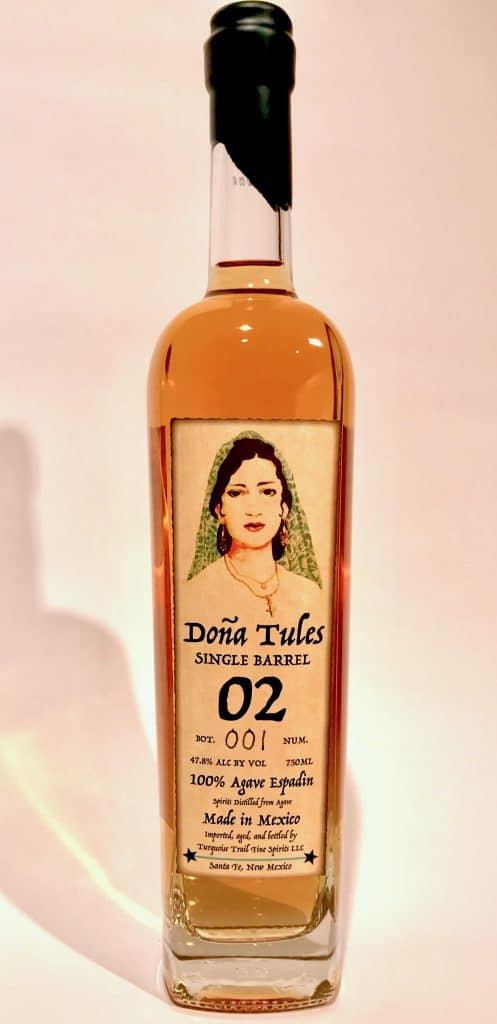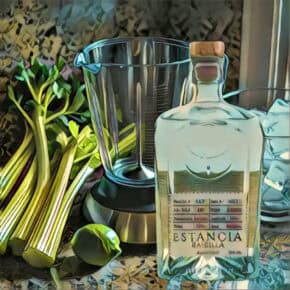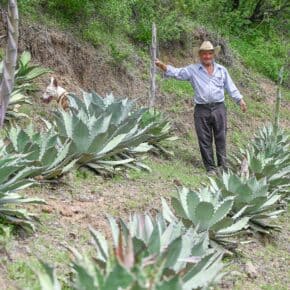The other week I wrote a piece about a collaboration between Mezcal Tosba and a new brand out of New Mexico called Doña Tules. I had a chance to follow up on the story with the man behind the New Mexico project, filmmaker Scott Andrews. A side benefit of sheltering in place is that talking on the phone is no longer a rushed thing – most of us are thrilled to have contact with someone outside our own homes because, really, our schedules aren’t that hectic or overbooked any longer.
As a documentary filmmaker, Andrews has always been attracted to stories and crafting narratives for them. As it became increasingly difficult to make a living as a documentary filmmaker, Andrews and his wife began rehabbing properties, which enabled Andrews to continue creating films and explore other passion projects like winemaking and, eventually experimenting with the idea of aging agave distillates.
Andrews met Edgar Gonzalez while traveling with Clayton Szczech of Experience Agave in the Sierra Norte. He pitched his idea to Edgar, to buy a batch of mezcal in bulk, ship it to the US to age in barrels and then bottle and sell it. He would also create a video about Edgar and Mezcal Tosba that both could use. And the final kicker, all profits from the project would go to a non-proft or community project, which in the case of Tosba are funds for the children’s brass band in San Cristobal Lachirioag. This became the model for the project as Andrews traveled to other areas in Mexico, eventually securing Raicilla and Bacanora for additional barrel aging.
Thus was born Doña Tules and the Single Barrel club. Of course the devil is in the details and figuring out how to correctly age the distillates, especially when the batches are so small and precious, was the true challenge. Andrews ended up dismantling 11 different French and American oak barrels that had previously contained bourbon, brandy, sherry, port, chardonnay, zinfandel, and cabernet and cut them into sizes so the surface to volume ratio inside a bottle would be the same as in a barrel. He would then dose different bottles from cases of product he was buying in order to get a sense of flavors that would be imparted. Because of this experimentation he was able to compile information about what the different barrels tasted like with the different types of distillates. It also led to a side project of developing a home kit for aging called Oakkits.
Now that he had a sense of the flavors, he began aging the different distillates he had acquired. These included two different batches of mezcal from Tosba, two different batches of Bacanora from two different producers, and one batch of Raicilla for a total of eight barrels. Releases are on a two times a year schedule (May and November) with bottles first going to members of the Single Barrel Club and the others through direct sales or retail/bar accounts. The first releases are Tosba.
There are a couple of things to note in how the bottles are labeled with the first being them all called agave distillates since they were bottled outside the area of production. The second comes with aging terms Reposado and Añejo which Anders won’t be able to use because they are labelled “spirits distilled from agave” and therefore cannot have aging statements on the label per the TTD rules. However, he can and does include the aging details on the website which is perfectly legal. Of note, he also puts 7-10% of each bulk product into glass to add back into the final aged product.
The Breakdown
As previously mentioned, Andrews purchased two different batches of bulk mezcal from Edgar Gonzales of Mezcal Tosba to age in four barrels. The four releases and their aging methods are as follows:
- Release 01 – aged in new French oak for 20 months
- Release 02 – six months in New French oak followed by 22 months in a single use bourbon barrel
- Release 03 – 30 months in French oak Chardonnay barrel
- Release 04 – three years in single use bourbon barrel
As a side note, there are conversations between Andrews and Tosba on sending a couple of the empty, used barrels down to the palenque…
For the aged Raicilla batch of two barrels, Andrews worked with grower and master distiller Manuel Salcedo in Mascota, Jalisco. He currently has no distribution in the US. The Raicilla is 100% Agave Lechuguilla, which is cooked in an above ground oven, then openly fermented with wild yeast, distilled in wood and steel, one and a half distillations in which the heart of the first distillation is retained and blended with the second distillation, ultimately producing a 42% Raicilla. Because the flavor was more delicate and herbal and had less smoke due to the cooking process, Andrews did not want to rest it in a new barrel, opting instead to age it for three years in single use French Oak barrels from the Tosba run.
For the Bacanora, Andrews worked with two different producers, the father and son team Roberto Contreras of Rancho Tepúa in Baviacora, Sonora and Beto Heredia of Banamici, Sonora.
The Bacanora from the Contreras’ used Agave Pacifica cooked in an in-ground horno and then open fermented with wild yeast and double distilled in stainless steel ultimately producing a bold 48% spirit. Andrews then aged the Bacanora for six months in new French oak followed by six months in once used (mezcal) French oak which mellowed the initial strong flavor of the new French oak.
The Bacanora from Beto Heredia was made from Agave Palmieri and was cooked in a ground oven, fermented open with wild yeast and then double distilled in steel producing a 48% spirit. It is currently aging in a single use bourbon barrel.
Because there are no color additives, people might be surprised with the colors of the final product. New French oak can impart a darker more orange color, while the single use bourbon barrels are a pale yellow.
For more information about joining the club or reading more about the project, check https://forsippingonly.com/.















Can i have all of them, at the same time? It will help with this quarantine.